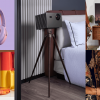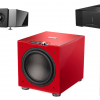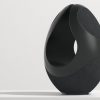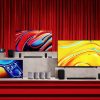Reprinted with permission from Knowledge@Wharton.
Apple's iPod again ruled beneath the Christmas tree in 2005 after the latest model of the iconic music player was outfitted with a video screen. And as the new year begins, a long-anticipated era of convergence in consumer technology products draws closer, according to Wharton faculty and technology analysts.
Cell phones that play video, e-mail delivered to handheld computers, telephone conversations over the PC — and hundreds of other glimpses into Christmas future — were on display at the annual Consumer Electronics Show in Las Vegas last week. The stepped-up presence of digital giants, including Microsoft, Google, Yahoo and Intel, signaled the companies' ever-increasing interest in expanding from the office into consumers' living rooms. "The theme of seamlessness is one I am pleased to see happening, and it will accelerate in 2006," predicts Wharton marketing professor Peter Fader.
Manufacturers are beginning to respond to tech-impaired consumers with new systems that make it easier for different devices to work with one another. "The market demands this …. It's a natural evolution," Fader notes, adding that consumer electronics manufacturers and their digital hardware and software partners may continue to offer dueling standards. "But it's not a competition that we, as consumers, have to deal with."
According to Tim Bajarin, principal analyst at Creative Strategies, a Silicon Valley consulting firm, the rise of the Internet is driving a new era in electronics in which "everything is connected. Devices are connected to the Internet or to each other via a home network. We have been talking about convergence for I don't know how many years, but without us realizing it, the thing that's bringing convergence about is connectivity."
The Internet has become a powerful distribution medium for mail, images, text and, most recently, video, he says, adding that electronics manufacturers must now focus on the three major screens in consumers' digital lives: the PC, the TV and the cell phone. A fourth screen, the iPod or another portable media player, is also emerging. A manufacturer of digital cameras, for example, needs to know how to connect the device to all three screens, he says. "When you start thinking about these three screens, you have to start thinking about consumer electronics as part of a larger digital ecosystem."
Stronger Brand Identities
Convergence is evident among large technology companies that once focused on business systems but are increasingly looking to expand into consumer electronics and entertainment, says Saikat Chaudhuri, Wharton management professor.
Google, known primarily as a search engine, has announced plans to offer downloads of video and movies. Chip-maker Intel Corp. has teamed with video-content suppliers as part of its new marketing initiative — called Viiv — focusing on the digital home. Microsoft is pushing a new media software package called Vista and has formed an alliance with MTV to open its own music store, Urge, to compete with Apple's iTunes.
Apple, which staged its own trade show in San Francisco, unveiled a new laptop, known as the MacBook Pro, using chips from its new supplier, Intel. The laptop has software for movies and slide shows and a built-in camera for videoconferencing. Apple chief executive Steve Jobs also announced that the company exceeded sales estimates for the fourth quarter by $1 billion. Largely on the strength of a three-fold increase in iPod sales, Apple had revenues of $5.7 billion.
"There are large consumer markets ready to be exploited, not just in the U.S., but also in China, India and developing nations," says Chaudhuri. "There is really room to grow in that area. Even with slightly lower margins, one could achieve a high level of earnings based on volume. That's what companies are going after."
Unlike the most recent technology boom, companies are focusing tightly on their core areas of expertise rather than spreading themselves too thin, Chaudhuri adds, noting that companies branching into consumer products are building stronger marketing and brand identities than they had to when they were devoting more attention to their business clients. Joint-venture partnerships are another route for companies to move quickly into the consumer market. "The behavior of venture capitalists is mirroring these changes. Instead of spreading small amounts across a number of different companies, they are more focused in their approach and dispersing greater sums."
Fader says Apple scored "twin grandslams" in 2005 with the addition of video to its iPod player and the explosion of podcasting. Although podcasting was not Apple's idea, he says, the company has been able to enjoy a marketing halo-effect from the use of the word "pod" in this form of information delivery. Apple, however, faces a bit of a dilemma now, as other companies focus on the iPod as the product to beat. "The technology from other firms is really catching up fast. There are players that are far better, but maybe not as iconically cool."
Meanwhile, Google's ascent up the corporate technology hierarchy shows no signs of slowing down, Fader adds. "Google will continue to amaze and astound us as consumers and will continue to threaten and put fear in the hearts of all kinds of different businesses. Everybody knows that whatever Google does, they do it well and in an unexpected manner."
Yet despite the strong interest in consumer-oriented technology, Fader contends that the truly digital living room is not significantly closer to becoming a reality in 2006 than it was in 2005. "The technology is there, but it's going to be a generational issue. Could my children have a digital living room? Yes. But I never will."
The New Buzz Word
Meanwhile, wholesale consumer electronics sales are expected to hit $135.4 billion in 2006, up from $122 billion the year before, according to the Consumer Electronics Association (CEA).
Michael Gartenberg, research director at Jupiter Research in New York, says video — everything from cell phones to high-definition TVs to 102-inch plasma screens — dominated the Las Vegas electronics show. "Video was certainly the buzzword. There seems to be more and more interest in the video space in 2006 as well as more and more growth in the music space, with lots of people conspiring on how they can wring market share from Apple."
U.S. sales of digital televisions will hit 18 million units and $23 billion in 2006, the CEA reports. At the same time, more than 60% of MP3 players will have video capability, an innovation that helped push sales of the media players up 200% in 2005 to $3 billion.
According to Gartenberg, the presence of top executives from computer companies in Las Vegas, including Microsoft, Yahoo and Google, is a sign that digital technology companies are seeking new opportunities in consumer gadgets. "As more and more consumer electronics technology goes digital, that brings a host of new players into this space." However, these companies all have their own business agendas and technology formats that could lead to a new period of confusion for consumers and slow adoption of new products, Gartenberg warns.
For example, he says, Yahoo and Google will provide protected content that can be played on a PC but not transferred to an iPod. "Instead of the same seamless flow of content moving from device to device, it will lead to a lot of consumer frustration." That could also encourage consumers to buy all their technology from a single source, which might be an advantage for Apple, he says. Microsoft could profit from having its software in devices made by other manufacturers, but would lack a clear branding position.
The Importance of Design
Apple's success in making iPod a classic in no time is likely to make design an increasingly key component in the development of technology products, says Wharton management professor Sarah Kaplan. "The trend toward increased design is going to be extremely important, not just because people want things that look cool, but because design will become an intrinsic part of the technology," she says.
Aesthetics are becoming more and more significant in society, she adds, noting that blending style with utilitarian devices is now spilling over into the tech industry. "We have always thought of technology as this geeky, hard-core thing, but it turns out the most successful technologies are the ones with design that is deeply embedded, rather than design that is just slapped onto the technology."
Apple, she says, is obviously at the forefront, but other companies are now taking note. "You see companies like Samsung talking about what's missing is their ability to design in a way to meet consumer needs. They have all the technology inside, but not the design, and they are readily admitting that's what they are missing."
The challenge for managers will be to develop organizations in which design and technology professionals are able to work collaboratively, she says. "Historically, the tech people are very different from the design people. It has always been a challenge for organizations to figure out how to make people do this better. Now it's no longer just nice to have this. If you don't, it's a problem that management is really going to have to solve."
Another driving trend will be the continued development of nano-technology, Kaplan adds, predicting that while most commercial applications are still many years away, there will at least begin to be more interest in nano-technology from the press. Perhaps the most advanced of the many types of innovations that fall under the big umbrella of nano-technology is the carbon nanotube, a super-strong tube made of carbon molecules with superior capability to conduct heat and electricity.
Researchers are looking for applications for carbon nanotubes in computer technology and other devices, including cell phones. "They should be able to vastly speed micro-processing and vastly increase the storage and memory in these devices," says Kaplan. "Not this year, but maybe 20 years from now, there is talk about having one small memory device with all the DVDs you could ever watch in a lifetime."
Another strong theme in technology for the coming years is what Kaplan calls cross-fertilization. For example, she predicts increasing integration of electronics into healthcare with products such as mechanical hearts, high-tech prostheses and diagnostics. As with the integration of design and technology, managers will need to forge new partnerships with scientists working in divergent fields. It's not easy, but managers now see the need to pull this off, perhaps as a result of the 2001 technology financial crash, says Kaplan. "To get funding, you have to have a really good idea, and the only way to get a really big idea is to [work across] disciplines — not just add something incremental."
According to Eric Clemons, Wharton professor of operations and information management, the new technologies are, in many ways, similar to older products. For example, the iPod, he argues, is similar to a Sony Walkman that played a lot of songs loaded into it on a CD. Other changes are significant. "So the Walkman is now the iPod; the big change is that I can get a podcast," he says, adding that new technologies are opening up novel ways for creative expression. "It's not the gadgets; it's the combination of the gadgets and the interconnections … that makes" things so interesting.
Home as "Base Camp"
Steve Barnett, a senior fellow at Wharton, says that in the near term, consumer technology will continue to develop along two lines: home entertainment products aimed at making the home a nest, and other devices connected through broadband and wireless networks that can "turn the home into a base camp. All of a sudden we have phones that can play music like an iPod, be a camera, show video or access the Internet. Essentially the phone is becoming a universal instrument."
The next big consumer market, Barnett predicts, will be voice-controlled devices for use in cars. Aging baby boomers will drive up the market for new personal technology in diagnostics, such as cholesterol checks, and certain types of treatment. In entertainment, technology will increasingly allow viewers to interact with content, he adds. One example under development is Tele-immersion, which combines elements of virtual reality with sound and video to create a sense of altered reality without goggles or headphones. "As this new virtual reality becomes more accessible, people will be even more involved with games, and the question of what is reality is going to be a very open one."
Bajarin, the technology consultant, says consumers are near the mid-point of what will be a 50-year technology journey from analog devices to digital. The journey began in 1980 with the PC. For the first 25 years, technological development was aimed at the workplace. "The next 25 years will be about bringing digital technology to the masses," he says.
Beginning around 1998, he points out, a shift away from business to more personal devices began to occur with the first digital cameras and scanners. "What happened is we started really looking at the PC, not just for productivity, but for creativity."
Initially the Internet was used mainly for e-mail when it became part of the public vernacular around 1997, says Bajarin. That began to change as companies such as eBay, Google, Yahoo and Excite used it as a new distribution system for content, services and media. "Now the PC is shifting gears again. It is becoming the center, or hub, of our personal digital lifestyle."
Consumers are extending the PC experience into the living room with entertainment content, and into jacket pockets with hand-held devices such as the Treo smart phone. "Now, in the next 25 years, we will be working out the kinks," says Bajarian. "We will go through our ups and downs, but in reality we lived in an analog world for centuries. The fact that we are taking the planet digital in 50 years is actually pretty amazing."
Reprinted with permission from Knowledge@Wharton, the online research and business analysis journal of the Wharton School of the University of Pennsylvania.





























